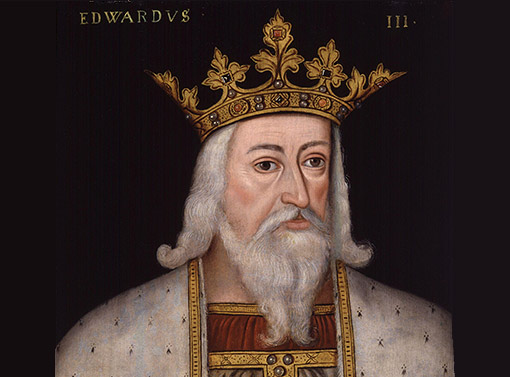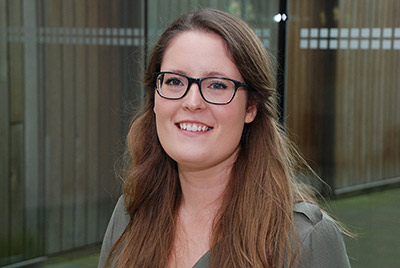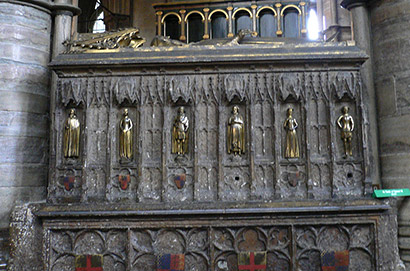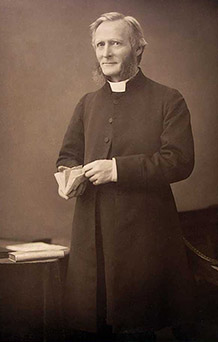Family man gets researcher’s vote for top English monarch
 Edward III's portrait. Image credit: National Portrait Gallery.
Edward III's portrait. Image credit: National Portrait Gallery.
Fri, 30 Oct 2015 13:48:00 GMT
Military successes overseas, domestic calm, but the creator of the Order of the Garter’s biggest achievement ... he was a doting dad
 ENGLAND’S top monarch? University of Huddersfield historian Nicole Harding is in no doubt. The crown goes to King Edward III, who reigned from 1327 until his death the age of 64 in 1377.
ENGLAND’S top monarch? University of Huddersfield historian Nicole Harding is in no doubt. The crown goes to King Edward III, who reigned from 1327 until his death the age of 64 in 1377.
He presided over stunning military successes overseas, and brought stability to his realm at home. His reign was also a golden age of chivalry with the creation of the Order of the Garter. But for Nicole, the clinching factor in Edward’s success was that he was a good family man.
The king had a large brood of children, but unlike most other English medieval monarchs he was never in conflict with his elder sons – who included the Black Prince – and centuries before Queen Victoria, he created a real family monarchy, cultivating a close relationship with all his children.
“Fatherhood was essential to Edward III’s reign and to his masculinity,” concludes Nicole in a dissertation entitled Exemplar King and Doting Parent, now available to read in the University of Huddersfield’s Repository. It is a highly original appraisal of the king that earned her an MA degree, and now Nicole has moved on to an engrossing doctoral project in which she collaborates with the Hepworth Wakefield to examine a Victorian art collection that reflects the medieval past of Yorkshire.
 Nicole is from St Albans, but when checking out potential universities she was immediately captivated by the friendliness and enthusiasm of the history department at Huddersfield. She came and stayed for her BA in history and English literature, her MA and now a PhD.
Nicole is from St Albans, but when checking out potential universities she was immediately captivated by the friendliness and enthusiasm of the history department at Huddersfield. She came and stayed for her BA in history and English literature, her MA and now a PhD.
Initially, the Victorian period interested her the most, but Nicole was soon enthused by the researches of Dr Katherine Lewis and Dr Pat Cullum, experts on medieval gender studies.
When Nicole began to research kingship and masculinity for an undergraduate project, she was fascinated by an image of Edward III’s tomb at Westminster Abbey in which an effigy of the king was surrounded by 12 figurines representing his children (as seen pictured in an photo by Henry Lawford).
“That is absolutely unusual. His children were so important to Edward that they stood for posterity on his tomb, signifying something so important about his kingship.”
 She explored the theme during her BA and developed it for her MA. But now she leaps ahead to the nineteenth century, having earned a Collaborative Doctoral Award conducted in tandem with the Hepworth Wakefield, following the success of Professor Paul Ward – Head of the University of Huddersfield’s Department of History, English, Languages and Media – when he bid to the Arts and Humanities Research Council for a training grant of £55,000. The project is entitled Location, Location, Location: The Gott Collection, Yorkshire Landscapes and Connected Communities.
She explored the theme during her BA and developed it for her MA. But now she leaps ahead to the nineteenth century, having earned a Collaborative Doctoral Award conducted in tandem with the Hepworth Wakefield, following the success of Professor Paul Ward – Head of the University of Huddersfield’s Department of History, English, Languages and Media – when he bid to the Arts and Humanities Research Council for a training grant of £55,000. The project is entitled Location, Location, Location: The Gott Collection, Yorkshire Landscapes and Connected Communities.
The collection was assembled in the 19th Century by John Gott (1830-1906), Vicar of Leeds and later Bishop of Truro (pictured), and his father William, a wool merchant. It includes 1,200 watercolours, drawings, maps, sketches, plans and detailed architectural drawings, documenting more than 200 Yorkshire villages, towns and cities.
Although the project might seem far distant from Nicole’s researches into medieval masculinity, she sees connecting threads.
“The Gott Collection is filled with images of places around Yorkshire and a lot of those are medieval buildings such as castles and abbeys, so I am looking at the medievalism of the collectors and the images and how people conceptualise those places today,” she said.
“So in my research I have got the Middle Ages, the Victorian period and the modern day alongside each other. It is all about identity and place.”







